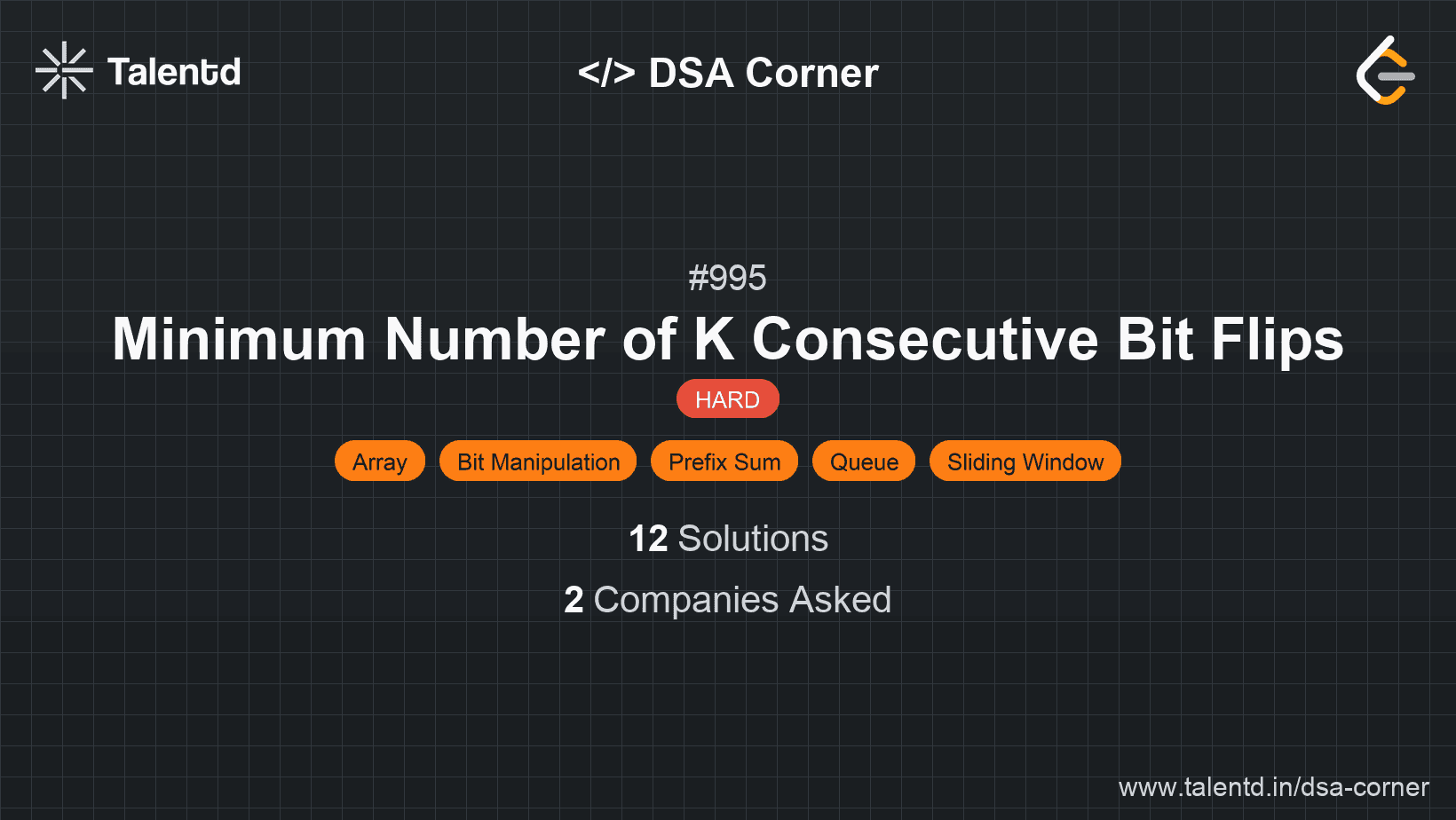
Sponsored
Sponsored
This approach uses a greedy strategy with the help of a queue to track the index of flips. The idea is to traverse through the array and only flip when necessary, using a queue to efficiently track start points of flips that affect the current position. When flipping, add the index to a queue. Dequeue any index that is outside the current consideration (i.e., more than 'k' steps away).
The time complexity is O(n), where n is the length of nums, because we make a single pass through the array, and the space complexity is O(n) due to the auxiliary array used to track flips.
1import java.util.*;
2
3class Solution {
4 public int minKBitFlips(int[] nums, int k) {
5 Queue<Integer> flip = new LinkedList<>();
6 int flips = 0, flip_count = 0;
7 for (int i = 0; i < nums.length; i++) {
8 if (!flip.isEmpty() && flip.peek() + k <= i) {
9 flip.poll();
10 flip_count--;
11 }
12 if (nums[i] == flip_count % 2) {
13 if (i + k > nums.length) return -1;
14 flips++;
15 flip.add(i);
16 flip_count++;
17 }
18 }
19 return flips;
20 }
21 public static void main(String[] args) {
22 Solution sol = new Solution();
23 int[] nums = {0, 0, 0, 1, 0, 1, 1, 0};
24 int k = 3;
25 System.out.println(sol.minKBitFlips(nums, k)); // Output: 3
26 }
27}Java utilizes a queue to assist in tracking the last flip point to determine if a flip is currently affecting the bit. Processing is done using modulo operations to simulate flip effect over time, which allows efficiently handling flips.
This approach utilizes a sliding window technique with a flipping effect flag, which acts as a state tracker for ongoing flip operations. Using an in-place element flipping marker in the array enables this technique to minimize memory usage and avoid using additional data structures to track state.
Time complexity is O(n) because only single iteration and local modification are performed, while the space complexity is O(1), assisting state via in-place array manipulation.
Leverages an `A[i] += 2` transformation as a flip tracker, effectively acting as a built-in state flag for toggles. This enacts flipping logic control using low-memory alteration.